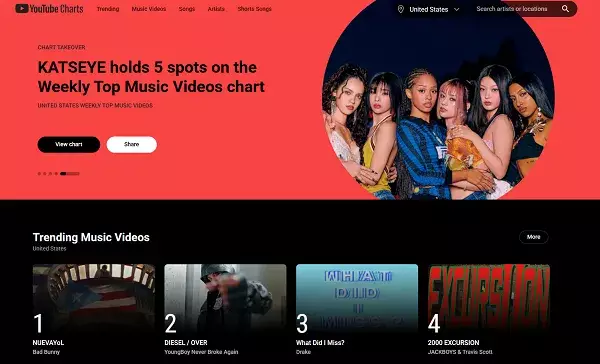In an era where digital content is more fragmented than ever, YouTube’s decision to eliminate its flagship “Trending” and “Trending Now” listings marks a pivotal transformation in the platform’s approach to user engagement. For years, these broad trend lists served as the gateway for millions to discover viral videos that captivated the masses. Yet, as content creation and consumption became increasingly specialized and community-driven, the effectiveness of a universal trending page diminished significantly.
This strategic move to replace the traditional trending section with category-specific charts indicates that YouTube recognizes the diversified nature of its audience. Instead of presenting a single, often overwhelming list of viral videos, the platform now emphasizes tailored charts—such as trending music videos, top podcasts, and movie trailers—that cater to particular interests. This shift aligns with evolving user behaviors that favor micro-trends and niche content over monolithic viral phenomena. From a broader perspective, it reflects an understanding that modern viewers no longer depend on generic trendlines, but rather seek out content that resonates with their personal passions and communities.
The Pitfalls of Popularity Lists and the Rise of Algorithmic Personalization
One of the most compelling aspects of YouTube’s evolution is its acknowledgment that traditional trend lists are becoming less impactful. The company cites a decline in visits to the Trending page over the past five years, attributing this to changes in how users find content—via recommendations, Shorts, comments, and community engagement. This shift suggests that platform algorithms, which prioritize personalized experiences, have effectively supplanted static trend exhibits.
In that context, removing the broadly curated trend display can be seen less as a loss and more as an alignment with user expectations. The platform’s recommendation engine has grown more sophisticated, capable of delivering highly relevant content based on individual viewing habits. Consequently, instead of relying on a single in-app list, YouTube seems to foster a more organic discovery process—promoting niche videos within subcategories that users are already inclined to explore. This reduces clutter and enhances the likelihood of meaningful engagement, rather than superficial clicks on viral videos that may have limited relevance to a viewer’s interests.
Implications for Creators and Viewers: Focus, Algorithm, and Content Strategy
For content creators, this change is a double-edged sword. On one hand, the broad exposure once granted by trending sections might diminish, making it harder for unknown creators to break through the noise. On the other hand, category-specific charts present a more targeted arena—if creators understand which niches they fit into, they can tailor their content to rank higher within those verticals. The clarity of categories can foster more strategic collaborations and focus efforts on building audiences around specific topics.
For viewers, the move could make discovery more meaningful but also potentially more fragmented if not managed carefully. Although the platform reassures that personalized recommendations will continue to surface videos aligned with individual preferences, the absence of a single “trending” highlight might mean that casual viewers miss out on broader viral phenomena. Nonetheless, for those seeking depth over breadth, category charts offer a curated and relevant exploration portal.
Potential Risks and Opportunities: The New Path Forward
Critically, this recalibration emphasizes quality and relevance over sheer popularity. Yet, it beckons questions: Could the removal of broad trending lists dampen the excitement of discovering spontaneous viral hits? Could creators who thrived on mass exposure find their reach diminished? While YouTube contends that its algorithms are more efficient at capturing individual tastes, there remains a risk that the serendipity associated with “trending” might be lost.
Conversely, this shift opens up opportunities for creators and viewers alike to develop deeper connections within specific content communities. It encourages a move away from chasing fleeting viral fame toward cultivating authentic niches. Additionally, as the platform refines its category charts and expands to include more niches, there’s a chance for a more diverse and vibrant content ecosystem to flourish—one where quality and relevance reign supreme.
In essence, YouTube’s revolutionary change is about trusting the intelligence of its algorithms and its community to foster a more personalized, engaging, and community-driven experience. Whether this will ultimately enhance or hinder discovery remains to be seen, but it undeniably signifies a pivotal step toward a future where content is tailored, meaningful, and rooted in community interests rather than fleeting viral trends.

